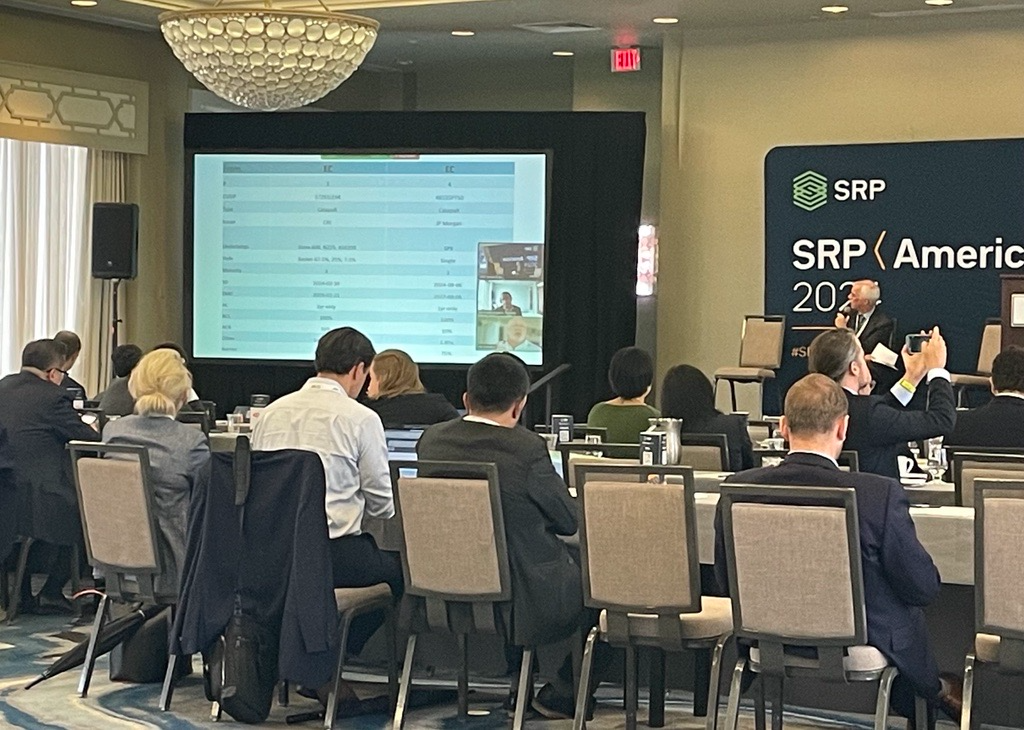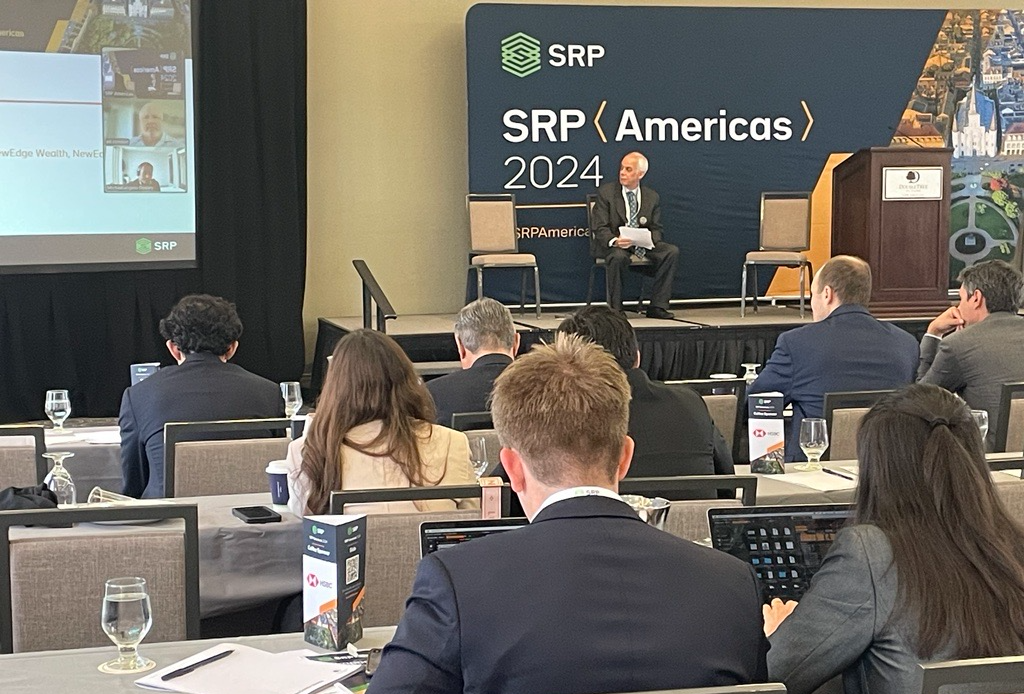This year, the SRP Americas 2024 Conference included a Product Lab discussion where panellists talked about the key properties of structured products and the challenges to meet investors’ as well as distributors and advisors’ preferences and choices.
The panel considered three use cases to discuss the product components, key features and properties that come into play every time a product is issued including the underlying, payoff, counterparty, wrapper, execution and market expectation to try to design the perfect product at the end of the session.
Essentially, advisors are voting with their investment dollars because they know they can successfully place with their clients - Ed Condon
In this article, we summarise considerations around the main building blocks discussed.
Underlyings
From an underlying perspective and looking at the selection process and how exposure is assessed in relation to the properties of stocks and indices, as well as more complex underlyings, Ed Condon (pictured), senior managing partner, Structured Insights, pointed at the "small handful of indices dominating the total issuance in the United States".
"Essentially, advisors are voting with their investment dollars because they know they can successfully place with their clients," he said. "It would be interesting to see what issuers would like advisors to be buying versus what they're actually purchasing.
"I'm in that camp that is going to focus on indices I know are going to resonate with the customer. So, I'm going to naturally gravitate towards indices with a lot of issuance behind and general interest in."
Michaelangelo Dooley, principal and portfolio manager, NewEdge Wealth, put the focus on transparency and lack of additional complexity.
"Structured notes are already complex for many of the end clients I would argue, even for some of the advisors that are implementing them," he said. "When we add to that complexity with things like proprietary indices, sometimes that can become the full story, rather than the benefits of the structured note itself."
Dooley also noted that another problem with complex underlyings is that they can't really be benchmarked, and everything is done on a pro forma basis.
We have to toe that line between transparency and ease of understanding versus what is the absolute best investment in all cases - Michaelangelo Dooley
"Any advisor understands the S&P 500 index, and what has done historically," said Dooley. "We have limitless data on that, and we can have a sense for where it's going to go in the future. As an investment professional, I can understand the value that that index provides, but we have strayed away from the more complex proprietary indices because having to explain a new concept to every single client that we invest for can be a much bigger challenge sometimes. We have to toe that line between transparency and ease of understanding versus what is the absolute best investment in all cases."
On the question of using other vehicles such as ETFs to deploy more complex underlyings that can deliver higher sources of alpha, Dooley noted that for high- and ultra-high-net-worth investors looking for alpha generation, there is a place for things that are “maybe a little bit more outside of the box".
"This kind of investor can go direct to hedge funds, whether it's passive investment through equities or structured nodes," he said. "With structured notes you need to be very deliberate and understand what the client's objective is, before you throw a prop index in there. The terms can often look very attractive with these trades, but there's a level of skepticism. As an advisor or as a portfolio manager, if things go the wrong direction, we're on the hook for that."
According to Condon, the choice of more complex underlyings depends on where the investor wants to get exposure to.
"In this case you also want to be achieving the investment goal of the client, but you also want to ensure that you're not complicating the narrative. If you have to stop the conversation to explain the underlying index because it is a little bit out of the mainstream that is going to make the conversation less straightforward and more complicated from that point on."
Payoff types
With the autocallable structure representing a sizeable part of the market it was no surprise to see this payoff at the top of the panelists’ preference list.
Dooley noted that 80% to 100% of what his team executes on a regular basis are autocallables because of their simplicity and because "it comes in different forms".
"We do utilise contingent yield notes in one of our strategies, but one of our flagship notes that we utilise, actually more than any other, is the snowball which is similar to a contingent yield note, except it accrues the yield and it has a step down at the maturity point," he said.
"But the broader point here is that those autocallables are central to our strategy. Being able to generate the returns that we are with autocallables has been a big benefit."
According to Dooley, one of the historical issues with autocallables is the brokerage commissions which can be perceived as a conflict of interest because "having a note that is going to be redeemed consistently didn't feel in the client's best interest".
"We also didn't feel like it was transparent enough. This was one of the reasons we shifted to advisory based notes. But if you take that away, autocallables offer some of the biggest value in the structured notes space," added Dooley.
Condon favours uncapped structures with leverage, because "that's a very simple story to tell, clients understand it and the math is simple".
"I do like the story behind leverage, but you do need to be cautious when you're talking about leverage on structures that are capped," said Condon. "In this case, it's not so much about outperforming as it is with uncapped exposure but about getting to the goal faster. It's still leverage, but it's serving a different purpose and it's important to make that distinction when you're speaking with clients."
Counterparty exposure
As one of the key parts of any structured product, monitoring the credit risk is "probably one of the most beneficial things" when managing these products.
The recent demise of Credit Suisse was a reminder for the market although the exposure and disruption were minimal.
"We think about it in an SMA format as trying to cap exposure to about 20% for any single issuer," said Dooley. "This can be lower for issuers that we have some broader concerns about. We monitor on a daily basis the CDS spreads as well as credit ratings and to some extent the equity activity. Diversification is really the name of the game here and you have to be able to look at all issuers and to see what everyone is bidding to get the best value for the SMA."
From a sell-side perspective, according to Condon, the macro environment dictates much of what issuers are bringing to the market and what products are getting attention.
"Ingenuity in the sell-side can go up and you start to see worst off baskets," he said. "These are clever ways of introducing risk into the notes so that you can get more favorable optics on the terms."
In any case, the industry has learned its lesson.
“There has been an interesting shift in attitude and a general willingness to use non-domestic issuers and also non-registered paper. That's a good development in the market and proof of a broader acceptance of structured notes in general,” said Condon.
Do you have a confidential story, tip or comment you’d like to share? Contact Us | SRP (structuredretailproducts.com)


